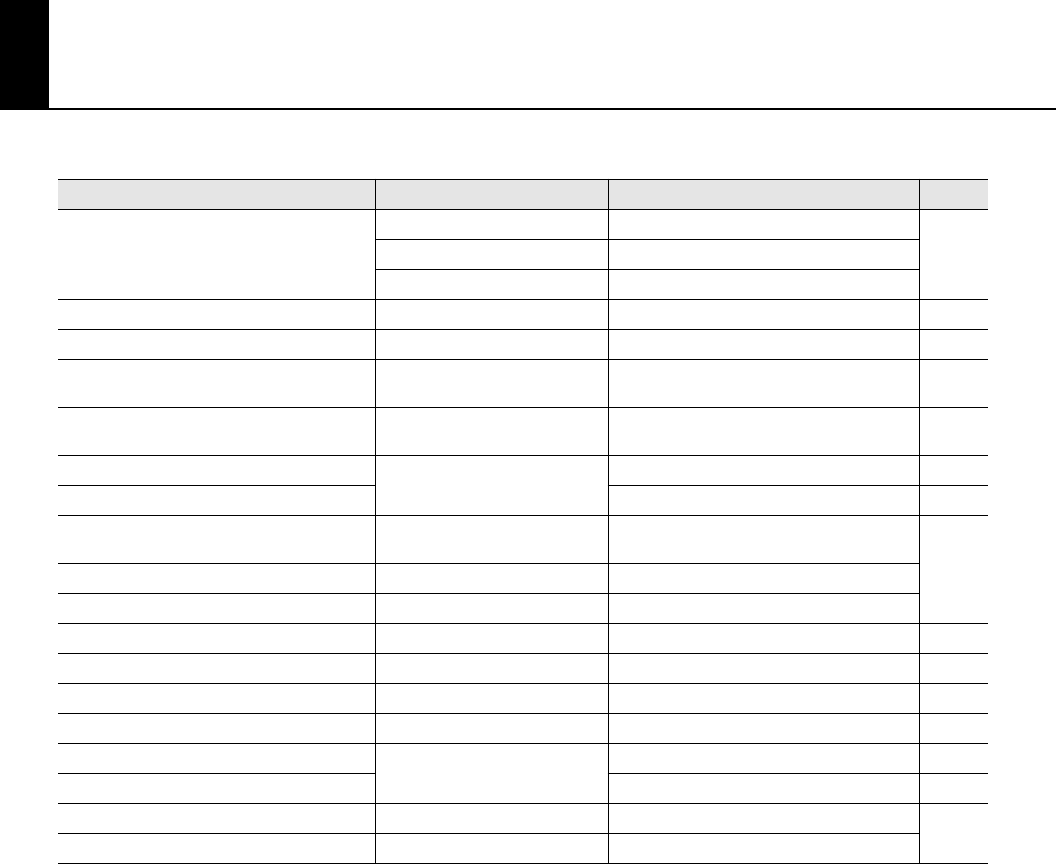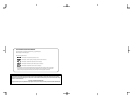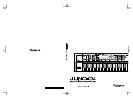
131
Shortcut List
You can access various editing screens by holding down the [SHIFT] button and pressing one of the buttons listed below.
What to do Button Screen Page
Edit the settings without changing the D Beam
controller’s on/off status
[SHIFT]+[SOLO SYNTH] D BEAM SOLO SYNTH screen
P.63[SHIFT]+[EXPRESSION] D BEAM EXPRESSION screen
[SHIFT]+[ASSIGNABLE] D BEAM ASSIGNABLE screen
Specify the effect applied to the microphone [SHIFT]+MIC IN [REVERB] MIC IN SETTINGS screen (System settings) P.76
Specify the split point (when Split is on) [SHIFT]+[SPLIT] SPLIT POINT screen P.66
Edit the arpeggio settings without changing the
arpeggiator’s on/off status
[SHIFT]+[ARPEGGIO] ARPEGGIO screen P.67
Edit the chord memory settings without changing
the chord memory’s on/off status
[SHIFT]+[CHORD MEMORY] CHORD MEMORY screen P.69
Edit the tone settings (Patch edit)
[SHIFT]+[RHYTHM (0)]
PATCH EDIT screen P.59
Adjust the volume of the rhythm set (Rhythm edit) RHYTHM EDIT screen P.60
Edit the MFX settings of the currently selected part
when playing multiple tones (Effect edit)
[SHIFT]+[PIANO (1)] MFX setting screen
P.61
Edit the chorus settings (Effect edit) [SHIFT]+[KEYBOARD/ORGAN (2)] CHORUS setting screen
Edit the reverb settings (Effect edit) [SHIFT]+[GUITAR/BASS (3)] REVERB setting screen
Adjust the volume of each part (Part edit) [SHIFT]+[PERFORM (9)] PART EDIT screen P.60
View or delete favorites [SHIFT]+FAVORITE [ON/OFF] FAVORITE UTILITY screen P.69
Make minus-one settings for SMF song playback [SHIFT]+[C.CANCEL/MINUS ONE] MINUS ONE screen (System settings) P.76
Set the tempo [SHIFT]+[TAP TEMPO] SOUND screen “System Tempo” (System settings) P.75
Adjust the song volume (when an SMF is selected)
[SHIFT]+[LEVEL]
SOUND screen “SMF Level” (System settings) P.75
Adjust the song volume SOUND screen “Audio Level” (System settings) P.75
Turn off the display backlight [SHIFT]+[EXIT] –
P.21
Turn on the display backlight [SHIFT]+[ENTER] –
JUNO-Di_e.book 131 ページ 2009年6月22日 月曜日 午前9時23分


















